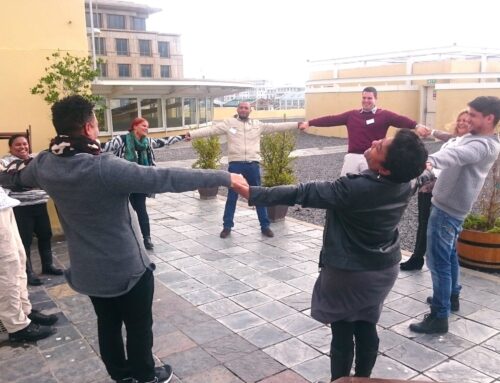How coaching repaired a leadership rift and restored productivity
It is difficult for leaders to address workplace conflict. When the conflict is between leaders at the same level, it can be even more difficult to get beyond defensiveness and blame. It can feel like trying to build a bridge in the midst of a swamp. What many organizations dismiss as an interpersonal issue is frequently a significant drain on performance. Here’s a real-life example involving two leaders of related service divisions of a large international services business where stakes are high.
Things were getting bad between the two leaders long before I was brought on board. Each of their teams were at each other’s throats. After a while, clients had begun to get involved in the struggle. We’ll call the leaders Xenia and Yves (not their real names). The conflict had been going on for a year before their overall boss eventually called me in:
When clients needed to get help from Xenia or her team, members of Yves’s team would say with an eye-roll “Good luck to you with Xenia, I don’t think you will get what you want.”
Xenia, on the other hand was putting out comments like “Yves thinks he knows a lot but actually he’s not that competent.”
I’m sharing this story because I know this is not an isolated case. There are literally thousands of other teams and businesses around the world where delivery is suffering because their bosses are at loggerheads. Their respective teams become polarized and productivity plummets. In this story I’ll explore why the conflict was left to fester for so long, what eventually brought effective action, and the business benefits of addressing the emotions that were fuelling conflict.
It’s difficult to address conflict between leaders at work
Yves was thinking and saying that Xenia wasn’t working hard enough, by the high-pressure standards of this top branded business. It was obvious to him because she went home relatively early in the afternoons. Xenia felt victimized as a parent and care-giver. Her after-hours work from home seemed to be wilfully ignored by her male peer Yves.
The rift between them got bigger. The HR department tried to mediate between the two leaders, and remained unresolved. Then their boss got involved and read them the riot act about the business cost of their conflict. He also tried to mediate to no avail. When their boss and HR eventually turned to me, the following became apparent.
“This is not a luxury,” they said to me. “Productivity is being affected. And we really need these two teams to collaborate better for the sake of our clients. So we feel we have no choice. We need somebody with particular skills in addressing relationship issues at work.”
With a prevailing culture of “leave your emotions at the door,” everybody felt it would be indulgent to acknowledge the strong feelings between these two key figures in the business. They kept pushing logic and pace, and the business case for collaboration. Eventually they realized they would need to slow down in order to go fast.
What helped the leaders shift from conflict to alignment
In essence, what I did was to help them slow down enough, to create the kind of space where they actually were able to listen to each other without leaping into blame and defensiveness. To do this they both needed to ventilate strong emotions.
For a few hours, they were allowed to step out of rational business decision making and just be emotional human beings. Once this was acknowledged, they had a catharsis, first individually and then collectively.
In the first session, I met with each leader separately, recognized how normal it is for passionate leaders to get into conflict, and invited them to express their fury and resentment to me. It was at this point that my “outside provider” status as a relationship systems coach really helped. They could rant and I could stay calm as they released their valves and blew off steam.
In the next session I brought them together and contracted with them to share responsibility for re-examining their assumptions without blame. This wasn’t easy and we had some hot moments. But it did not take very long for them to start realizing there was missing data they had overlooked. In his case, he hadn’t realized she was doing essential work from home after she had put her kids to bed. He had assumed she was lazy. In her case, she hadn’t realized that he just didn’t know her work patterns. She had assumed he was operating from a sexist, anti-women position.
The business benefits started to flow when I helped them recognize their common interests. They discovered that they are both hard working. They’re both focused on delivery. And they’re equally concerned about the welfare of their clients and stakeholders. Whew!
How two warring leaders working with a relationship systems coach brought business benefits
They had been in complete denial of the role of emotion in their business until we released those emotional valves in a safe space. Then, after venting, they were able to engage logic again and resolution was relatively easy. They left with clear actionable commitments for what they would do and how they would behave to collaborate in future.
I recently followed up with their boss and he is very happy. “It’s like they stopped in the middle of their mess, and finally saw each other,” he said. “It seems so simple now that the poison has been released. Their team members are able to collaborate across what were the battle lines, and our business productivity has rebounded.”
Discover more from Enterprisecoach
Subscribe to get the latest posts sent to your email.




Leave A Comment